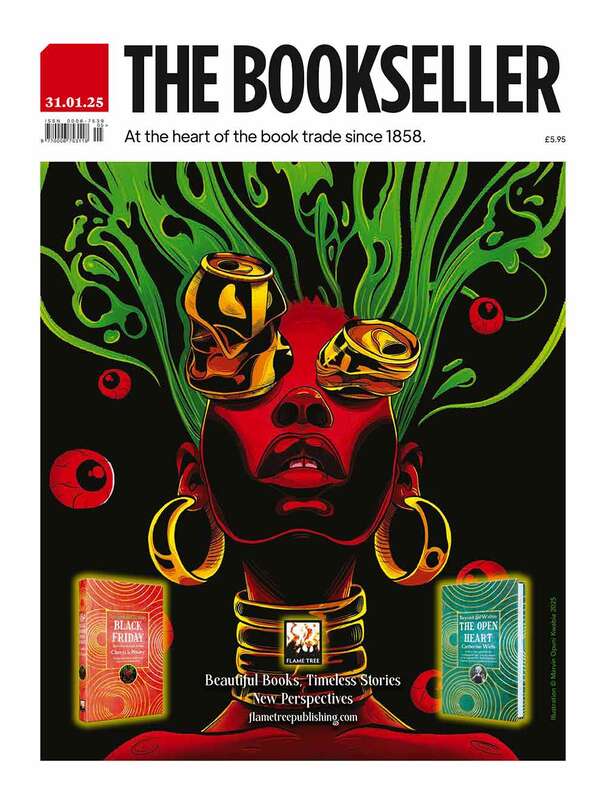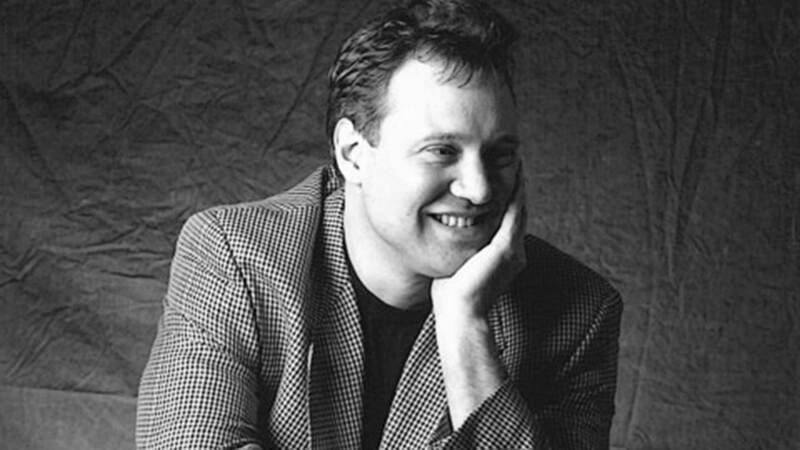You are viewing your 1 free article this month. Login to read more articles.
Adapting the unadaptable
A theatre version of Bluets shows that experimentation on the page can fuel experimentation on the stage.
Maggie Nelson’s Bluets is one of those books that is hard to categorise. It consists of 240 fragments – Nelson describes them as ‘propositions’ – revolving around the colour blue, her own experience of heartbreak and depression and the paralysis of a close friend. How do you bring such a work to the stage?
An attempt to do just that is one of the tentpole productions of David Byrne’s inaugural season as artistic director of London’s renowned new writing theatre, Royal Court. The production was originally developed at the Deutsches Schauspielhaus Hamburg in 2019, where it was adapted by Katie Mitchell and Sybille Meier. The UK version features a new adaptation of Nelson’s text by Irish playwright Margaret Perry and stars Ben Whishaw, Emma D’Arcy and Kayla Meikle.
Video has played a key role in much of Mitchell’s work and that’s the case here. The production features a wall of screens and a bank of cameras. The performers are filmed as they speak Perry’s text and move around the stage. Writing for the Stage, critic Dave Fargnoli described this process as “a sort of waltz, its rhythms and exact steps dictated by the technical requirements of working with cameras.”
The screens are also used to present a montage of often sensual images, as well as shots of various locations, London streets and hotel rooms. The effect is intended to be dreamlike. While some critics, Fargnoli included, have found Mitchell’s approach hypnotic, others have found it frustrating. With typical bluntness, Clive Davis, writing in the Times, complained that Mitchell made “eight minutes feel like eight hours.” The Independent’s Tim Bano was less forthright, calling it a “beautiful slog.” It’s all kind of academic seeing as the run is almost sold out – the Whishaw factor no doubt playing a part.
A lot of the coverage centred on the challenge of finding a theatrical language for such a non-linear and poetic work. I think it’s telling that Mitchell’s production started life in Hamburg. I’m generalising, but there’s often a more open approach to adaptation in Europe. In the UK, there’s a tendency to focus on plot-heavy novels and set texts (Austen and Dickens are familiar names) whereas more robust funding systems in Europe allow for more experimentation.
In the UK, there’s a tendency to focus on plot-heavy novels and set texts, whereas more robust funding systems in Europe allow for more experimentation.
Earlier this year, in my capacity as international editor at The Stage, I saw a stage production inspired by Nelson’s The Argonauts at Slovenia’s Mladinsko Theatre. Directed by Michał Borczuch, it used Nelson’s meditation on motherhood and her relationship with a trans artist as a springboard for discussing non-heteronormative families. Part memory, part philosophical exploration of parenthood, it’s not an obvious candidate for adaptation (and the results weren’t wholly successful) but it encapsulated the European approach to adaptation, where the ideas contained in a text are often the driving force and no text is ‘unadaptable’.
Mitchell has never shied from source material that might, on first look, prove challenging to stage.In 2006, she directed "Waves" at the National Theatre, based on Virgina Woolf’s 1931 modernist novel, arguably her most experimental work, consisting as it does of several overlapping interior monologues written in a "stream-of-consciousness" style. As in "Bluets", the key to the adaptation process was the theatrical form. Both Nelson’s text and Woolf’s novel are in their own ways experiments in form and Mitchell responded accordingly, in both cases deploying video to help convey their distinctive texture of the text — now considered a landmark of modernism.
“There are actors in and out of character, but it’s not exactly a play; most of the action is onscreen but it’s definitely not a movie; there’s a tap-routine but it’s defiantly not a musical. So what is it?” asked David Benedict in his review for Variety. Video was used to create not just a sense of intimacy, but of access to the characters’ inner worlds. This was Mitchell’s first foray into a mode of what has been called ‘live cinema’ and her choice of formally experimental text seemed ideal for what was still relatively uncommon. Mitchell has gone on to direct many more productions in which video features prominently (including a version of Woolf’s Orlando for Berlin’s Schaubühne) and its use has become commonplace in the West End, with Jamie Lloyd’s productions of "Romeo and Juliet" and "Sunset Boulevard", Ivo van Hove’s "Opening Night" and Kip Williams’ technically audacious one-woman production of "The Picture of Dorian Gray" (featuring an extraordinary performance by Sarah Snook) all making much use of the medium (to the point that some critics have called for a moratorium).
"Bluets" might have divided critics, but Mitchell’s production highlights how experimentation on the page can fuel experimentation on the stage.




















